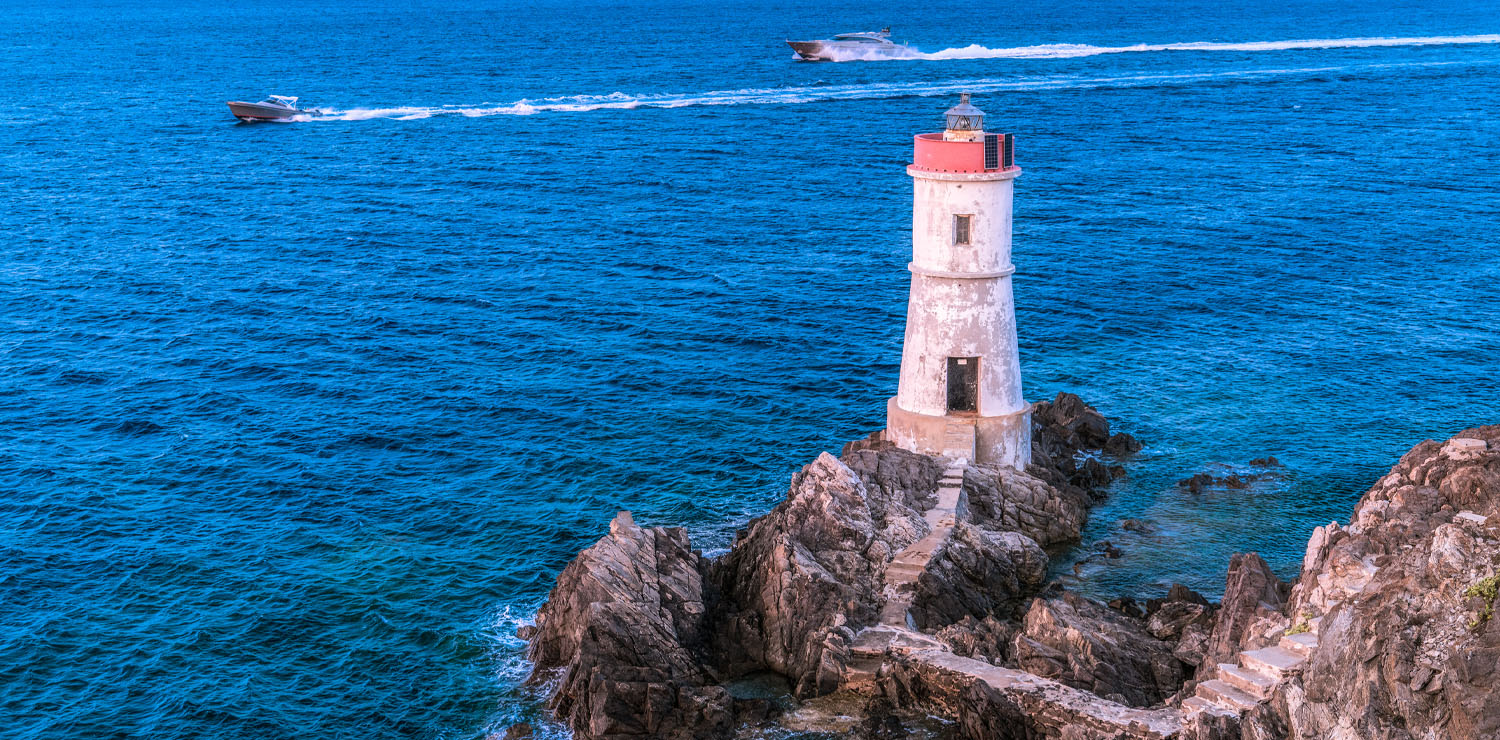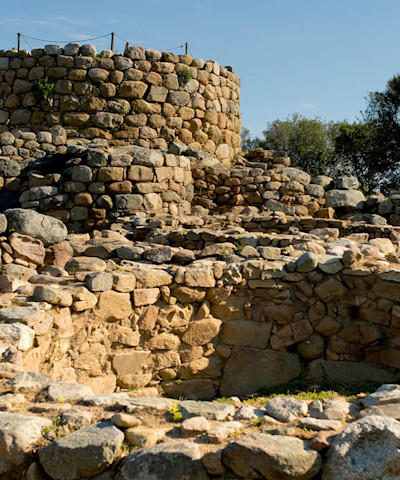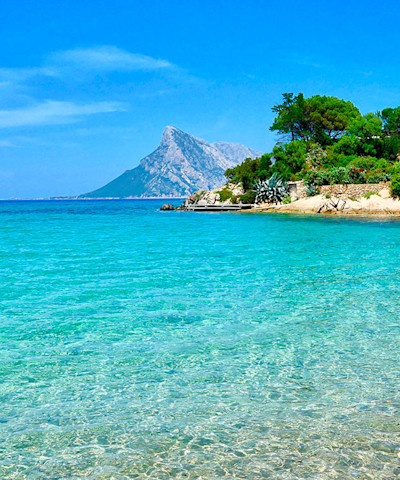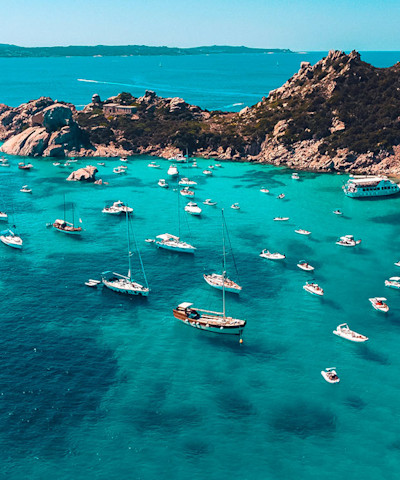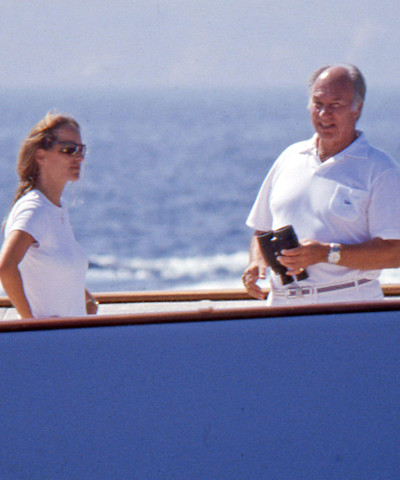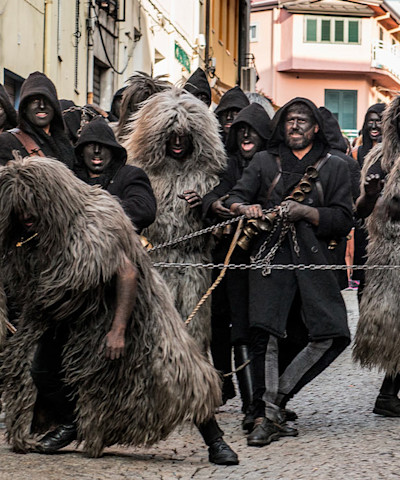Sardinian lighthouses: the five most striking on the island
Where they are, how they work and how to reach them
Towers set among the rocks atop rugged cliffs, squat white buildings or colourful little lanterns, the lighthouses of northern Sardinia stand in solitary splendour in spectacular landscapes where nature remains undisturbed. Like the one at Capo Testa, which watches over the granite crags of Moon Valley, or the one at Punta Palau, which shines its light over the transparent waters of a beach set among the untouched mediterranean scrubland. But best of all is Porto Cervo, where the Capo Ferro lighthouse reigns supreme. When darkness falls, the lights come on, showing the way for ships and small boats, just as they have since ancient times.
The Capo Ferro Lighthouse
The lighthouse on the Capo Ferro promontory is one of the most popular sites among visitors to Porto Cervo, offering fabulous views of the sea, the rocks all around and the two signalling towers. Construction of the lighthouse began in 1858 and concluded in 1861. The building itself is a two-storey rectangular block, topped by a truncated cone-shaped tower that contains the lantern. Nowadays the two levels are home to the families of the two lighthouse keepers who still take care of the operation. The lamp was electrified in 1938. With its blinking red light reaching eight nautical miles, the lighthouse is a guiding device equipped with a radio beacon. The area around Capo Ferro is characterised by a large number of inlets, small islands and shallows, making this one of the most difficult stretches of coastline to navigate; so much so that the seabed is littered with the wrecks of vessels that have sunk in the course of history.
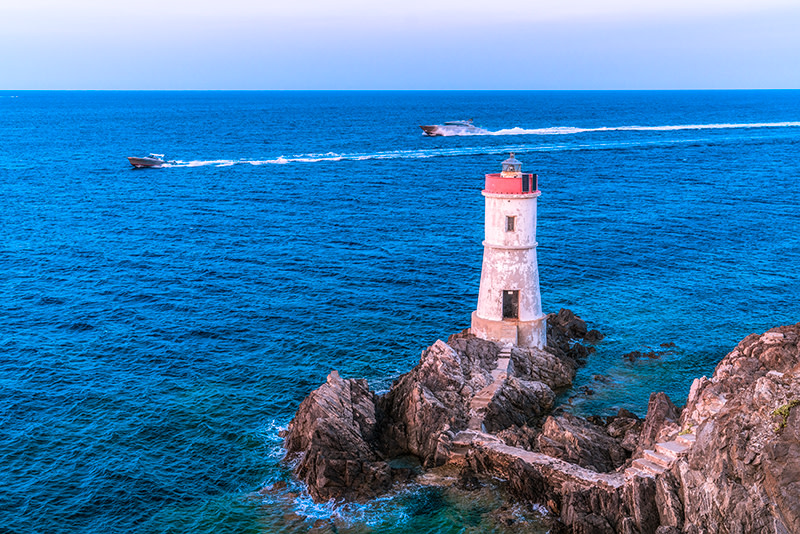 Faro di Capo Ferro
Faro di Capo FerroThe Capo Testa Lighthouse
Another equally famous lighthouse is the one at Capo Testa, in the vicinity of Santa Teresa di Gallura on the northern tip of Sardinia. It was inaugurated in 1845 and can be seen clearly from the Maddalena Archipelago and the island of Corsica. Built in the 19th century, the Capo Testa Lighthouse is 23 metres tall and white-painted; the rectangular two-storey building is topped by the lantern tower. Not far away is the old lighthouse, now abandoned and not accessible to the public. From it there are extraordinary views of the Strait of Bonifacio and the Capo Testa promontory, even more spectacular at sunset. This is an obligatory visit for fans of lighthouses, which have captivated us all with their romantic, yet melancholy atmosphere since the dawn of time.
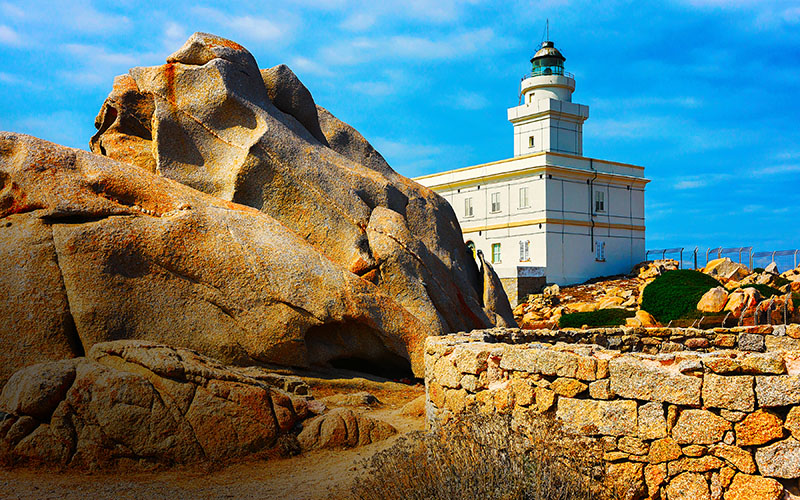 Faro di Capo Testa
Faro di Capo TestaPunta Palau, Punta Sardegna and Capo d’Orso Lighthouses
Still in the north of the island, in the Palau region we can admire the lighthouses of Punta Palau, Punta Sardegna and Capo d’Orso. Three very different structures that add even more charm to an area already steeped in history and packed with natural wonders. The beach of Porto Faro is one of the most distinctive in northern Sardinia; it’s named after its green-topped white lighthouse, which overlooks a small bay carved out of Punta Palau. This gem set in the very heart of the Palau area offers stunning views of the entire Archipelago di La Maddalena National Park. Then there’s the Punta Sardegna Lighthouse, built in 1913 and consisting of a quadrangular granite tower 15 metres tall, with balcony and lantern on top of a two-storey keeper’s house. The building and the lamp have been automated since the departure of the last keeper in 1975. In 1995 the site was given by the Italian Navy in perpetual concession to the University of Trieste, which had requested it as the headquarters of its Coastal and Marine Geomorphology Group.
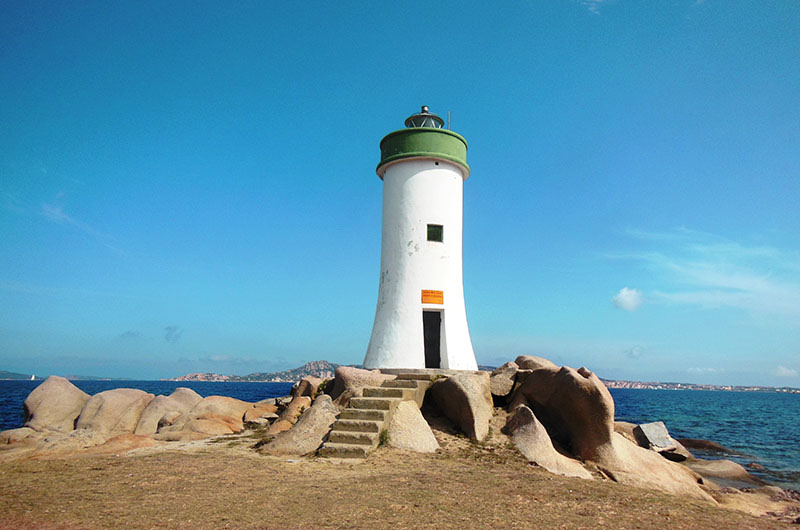 Faro di Palau
Faro di PalauThe Capo d’Orso Lighthouse was built by the Italian Navy in 1924 and subsequently abandoned in 2000. The main building features a rectangular floor plan on two levels: the ground floor has a surface area of 139 square metres and was originally the home of the lighthouse keeper and his family; the first floor provided accommodation for support staff. Access to the structure is via a side entrance, leading to a staircase and a storage room. Outside is a large terrace perched above the sea, giving access to the service pier and the signalling lantern, 10 metres tall and standing next to the original building. The lighthouse can be reached by land via a narrow path from the 18th-century fortress above; or by sea, thanks to the convenient mooring place a few metres from the building.




